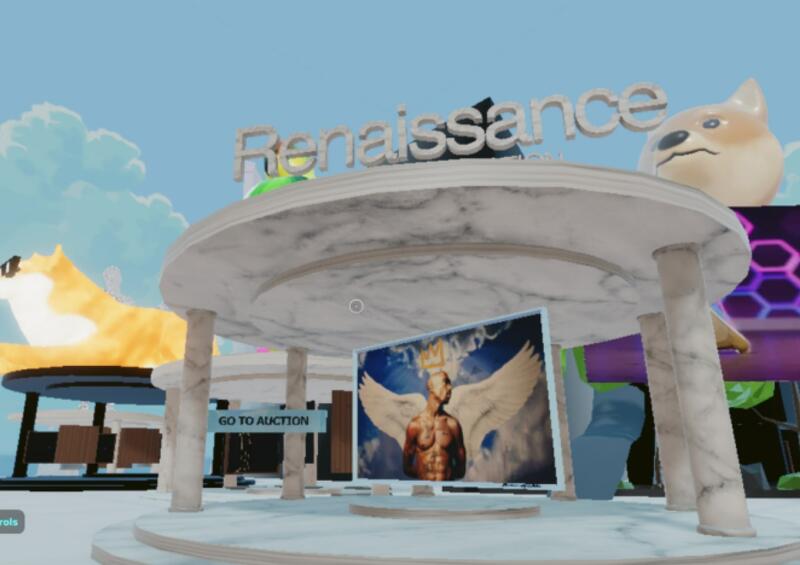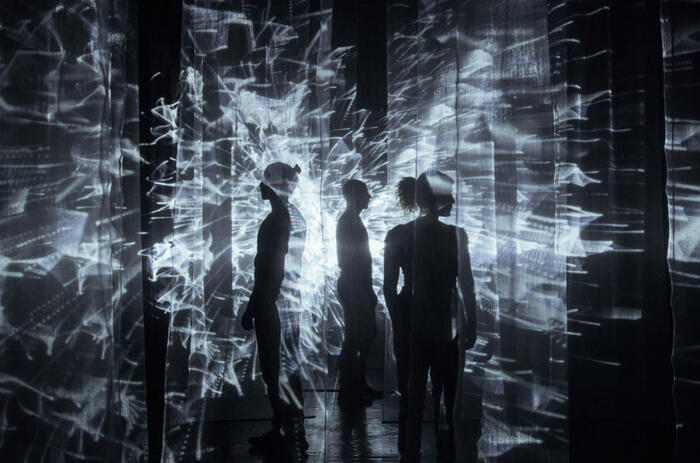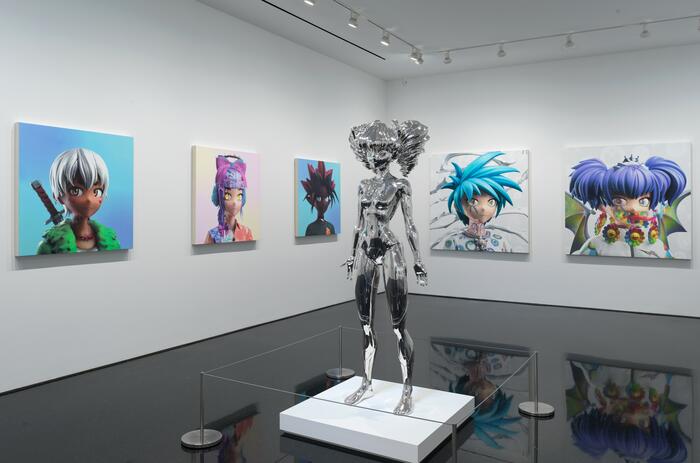NFTS AND METAVERSE: A CUBIST VIEW ON THE NEW DIGITAL ECOSYSTEM (PART 1)
As a conceptual artist working in the crossroads of art, science, and technology, with a corporate past and a social communications baseline, I am deeply interested in the new digital ecosystem raised by blockchain technology, NFTs and the Metaverse, from a perspective that addresses this realm as a sociological phenomenon, as a new business field, and as another one of the many mediums I utilize to express my ideas.

It is in this spirit, from a fragmented and multiangled view, that I have been delving in the deepness of this new technology, making use of it in my work, and therefore realizing that there are certain issues that are interesting to highlight. The aim of this text is to share these reflections.
A mirror of our times
Throughout time, cultural and historical aspects of each epoch have leaked into the work of artists. They have been entrusted by time with the task of reflecting on changes and their impact in society. Just like a dream of new worlds has decanted in the puzzling and illogical paintings of surrealism, or the Industrial Revolution’s new machinery has been transformed into movement and repetition in futurism, culture’s guiding thread has been portrayed in artists’ works, techniques and themes over time. It is not rare that today’s main preoccupations are being expressed through digital mediums.
We can all agree then, that merging contemporary art and technology in the virtual world is a sign of this age. The new forms of expression are novel in terms of themes, media – referring to blockchain –, and techniques, which can vary from augmented reality to artificial intelligence or generative algorithms.
Digital art has been around for a long time, but the blockchain technology has reassessed a long-undervalued medium. It basically adds the scarcity principle into the digital art formula. Virtual material has never been so highly valued in art because authenticity has never been possible: every digital bit could be reproduced. Provenance, authenticity, ownership and basically uniqueness, are all assured by blockchain, which is kind of a decentralized digital ledger.
I mint, therefore I am?
Considering the hype that builds around the new possibilities NFTs offer, and the big dollar signs one sees in the press, it is not surprising to see artists, celebrities, and sports’ personalities rushing to mint almost anything. But the existence of many strivers and only a few stars prove that succeeding in the NFT world is not as easy as one may think.
To begin with, the NFT “superstars” are generally not newcomers that got lucky and sold their NFTs for millions. They are usually professionals of the digital realm, that already have a career and success in their field. (Or celebrities of the size of Paris Hilton; that would sell their used underwear for millions too). So, I would say that if you are not the latter type of human or have no digital experience at all, then step back and give it a second thought before minting the photograph of that cool collage you made ten years ago, or the picture of the most spectacular sunset you took on your holidays.
Let’s mention some examples of those who are actually earning money from NFTs. Beeple may have been an unknown name in the traditional art circuit until its record selling “5000 days”, yet he has a track record as a successful professional designing graphics and animations for such commercial clients as Louis Vuitton, Apple, and Justin Bieber, and he even worked in the digital spectacle of the Super Bowl in 2020. He has recently launched a collaboration with none other than Madonna, which of course has all the components for a great marketing success, but I personally found of – at least – dubious taste. Pak, whose identity is shrouded in mystery, stands as the founder and lead designer of Undream Studio, and as the creator of Archillect. He has been producing digital works for over twenty years, and he even is an early bitcoin investor. Refik Anadol, who is personally one of my favorites, is consolidated as a multi-awarded media artist, who has been using artificial intelligence in public immersive artworks for years.
-
Beeple - Everydays: the First 5.000 Days
-
REFIK ANADOL (B. 1985) - Living Architecture: Casa Batlló. non-fungible token ERC-721; custom software, generative with sound. Executed in 2022 and minted on April 11, 2022. This work is unique and is accompanied by an artist-signed 3D physical certificate. Living Architecture: Casa Batlló is the first live dynamic and generative NFT of its kind. Inspired by Antoni Gaudí's famous Casa Batlló in Barcelona, Refik Anadol uses environmental data gathered real-time from sensors placed around the building. It captures and reflects the facade of the iconic UNESCO World Heritage Site and the life around it. - The work was sold by Christie's at a price of USD 1,380,000 in May this year. Photo: Christie's
In terms of themes and techniques, it is only natural that the latest advances in technology, specifically the use of Artificial Intelligence, deep learning, and generative art, are an intrinsic part of the most interesting NFT pieces. A personal note in this point: as much as I appreciate Beeple´s ironic political and social satire collages, which make clever reflections on current issues, I consider that it would have been more interesting if the NFT piece that pierced the market, being the first one of such success in a traditional auction house thus making everybody aware of NFTs, was a piece that included more of these latest technologies and tools.
Furthermore, a very successful breed among NFTs constitutes the so called “virtual collectibles”. Personally, I would be wary of calling this art, but really who am I to say. Larva Labs created the first ever NFT collectibles Cryptopunks and Meebits, which were engendered by a generative algorithmic engine that randomly assigned each punk its attributes. Bored Ape Yatch Club, created by Yuga Labs, stands as another example of collectibles, very popular amongst celebrities, such as Justin Bieber, Eminem, or Jimmy Fallon. It consists of a collection of 10,000 unique Bored Ape NFTs which includes a membership of an exclusive virtual club with the purchase of each ape. They have recently launched a new virtual coin and are in the midst of building their own Metaverse.
Perception and branding are the key words in this case. Belonging to this select group of individuals who own this Apes and employ them as their profile pictures in social media, is analogous to how a business owner communicates his business’ success with a luxury suit or watch. At this point, NFTs become an aspirational object of desire, which has the capability of turning one into a member of a social lineage. This “business model” is being repeated and copied endlessly, sometimes in partnership with celebrities, sometimes with a “fashion of the month” inspiration, but always with the same modus operandi: cute (?) cartoon + generative algorithm which creates unique n number of versions + celebrity support + right to use the NFT in social media + belonging = A Status Symbol and a fantastic commercial idea.
The Metaverse stands as an opportunity for certain brands or companies to reach a niche audience that is very challenging to grasp through other means, offering a major advertising potential. Corporate giants such as Visa, Nike, or NBA, and top sports personalities like Tom Brady, Steph Curry and Lionel Messi have already stepped into this virtual world. A Punk pin badge was even featured at the Met Gala on the apparel of Reddit co-founder Alexis Ohanian. According to JPMorgan, global Metaverse revenue opportunities on concepts like live events, ads, social commerce, and hardware are projected to reach over $1 trillion.
If we consider the so called “traditional artists”, we can observe how some of the usual early adopters are getting into the NFT hype train. Murakami has also become immersed in the collectible realm in partnership with RTFKT, creating a series of 20,000 algorithm generated next-gen Avatars called CloneX, at the style of Bored Apes or Cryptopunks. Damien Hirst recently presented a series called “The Currency”, a collection of 10,000 NFTs which correspond to 10,000 unique physical artworks, which are stored in a secure vault in the UK. His proposal goes one step further: after a year of owning the NFT, the holders must decide whether they prefer to keep either the NFT or the physical piece. The one which is not selected gets destroyed. Jeff Koons also got on board the new wave. He announced his “Moon Phases”, a collection of space-bound objects including NFTs by NFMoon, an art-tech company, which will be sold by Pace Gallery new NFT platform Pace Verso.
-
Damien Hirst - The Currency
-
Instalation view - Artwork ©2022 Takashi Murakami/Kaikai Kiki Co., Ldt. All right reserved. - Photo: Rob McKeever - An Arrow through History - May 11–June 25, 2022 - Images of the physical exhibition in Gagosian and the virtual exhibition in the metaverse.
-
Takashi Murakami - CLONE X x TAKASHI #1 Murakami Arhat – 2022 - Acrylic on canvasmounted on aluminum frame, 59 ⅛ x 59 ⅛ inches (150 x 150 cm) - ©Takashi Murakami/Kaikai Kiki Co., Ldt. All right reserved
If I reflect upon my own conceptual art practice, I approach this technology as another of the many tools I use for conveying my ideas – if its use is justified by the piece´s concept. For instance, in Porvenir: One and Three Realms, a series reflecting on climate change, I propose a contemporary stance on the discussion on representation and meaning, which Joseph Kosuth proposed with his One and Three Chairs in 1965. The series is comprised of a large-format sculpture titled Porvenir, and two NFTs. Wannabe Porvenir NFT, which is currently exhibited at Decentraland’s Museum District, is a rendered image of the sculpture project. This NFT constitutes a metaphor of the idea before its materialization, highlighting technology as a creation tool that exists at the same level as man. Porvenir Selfie NFT consists of a life-size photograph of the sculpture, showing technology as a recording tool, embodying the transformation from the real world to the virtual realm. Just as Joseph Kosuth poses the question of which one of his representations of the chair is the most accurate, I reflect, in times of NFTs and virtuality, about which of the three pieces most accurately embodies the concept I want to communicate.
On another series titled John Doe, an abstract identity, I reflect on the self-construction of the self, in times of virtuality and connections. Making use of the latest technologies, I use AI and generative algorithms to make a comment on identity and its appropriation. One of the pieces in this series sets up a performance in the metaverse. I employ my self-created avatar, to purchase my own virtual name, in the form of an NFT. This simple action adopts the name as the protagonist – the name, an aspect that is so characteristic of identity, so intrinsic to our own representation. The selfdesign of a virtual identity reaches its culmination in this action, which implies a monetized and self-appropriation of one’s own virtual – or not – identity. Is the fact of making a statement about identity in a form in which I have created my own self, staged in a virtual space that is clearly a reference point for media hyperreality, a paradox? This subject is a key point in my research on self-construction, in relationship to virtual identity and technological tools.









